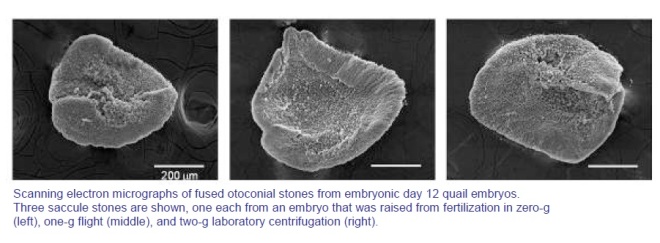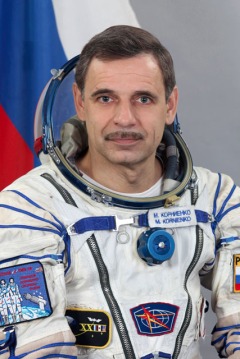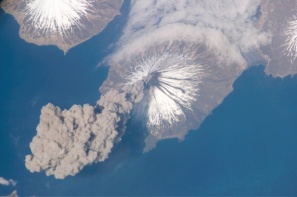|
Part I, Part II, Part III
|
|
In Part I, we looked at “Technology Development for Exploration” and “Physical Sciences in Microgravity” aboard the International Space Station from NASA’s report on “International Space Station Science Research Accomplishments During the Assembly Years: An Analysis of Results from 2000-2008”.
The major areas of research from the report include:
- Technology Development for Exploration
- Physical Sciences in Microgravity
- Biological Sciences in Microgravity
- Human Research Program
- Observing the Earth and Educational Activities
- Science from International Space Station Observations
Here in Part II, we will highlight research from “Biological Sciences in Microgravity” and “Human Research Program”.
|

International Space Station. Credit: NASA Image |
Biological Sciences in Microgravity
For long term human occupation of the Solar System, production of food and reproduction in microgravity are key research arenas.
Thale cress (Arabidopsis thaliana) is a model system in plant biology studies and has been studied aboard the ISS in a series of tests over three Expeditions (2, 4, and 5). The studies used the Advanced Astroculture apparatus, a commercially sponsored payload that “provided precise control of environmental parameters for plant growth, including temperature, relative humidity, light, fluid nutrient delivery, and CO2 and ethylene concentrations” (p 83).
Results included successful germination, growth to maturity and production of seeds. Both plant and seed tended to be slightly bigger than ground results. Seed germination rates were similar to ground germination, and no major morphological differences were noted. Additional results have not been released.
The Avian Development Facility (ADF) is designed to study embryogenesis in microgravity (the ADF can carry bird eggs, fish, plants, insects, or cells in its sample containers.). “During its flight on space shuttle mission STS-108 to the ISS, the ADF housed two investigations: the Development and Function of the Avian Otolith System in Normal and Altered Gravity Environments (ADF-Otolith) and the Skeletal Development in Embryonic Quail on the ISS (ADF-Skeletal) investigations” (p 81). It has been suggested that absence of gravity can affect embryo development. Changes in inner ear development has been observed before, and the Otolith experiments showed that inner ear bones from quail embryos are larger than those found in controls on Earth. Additional analysis is being conducted. Below are images from the experiment showing differential development.

Credit: NASA Image.
The ADF-Skeletal experiments were designed to begin determining the molecular and cellular biology of bone formation and loss.
Osteocalcin levels in the day 12 embryos showed no effect from space flight. However, day 7 and day 12 embryos direct mineralization quantitative studies have not been reported. Second, space flight embryos had a reduced level of collagen-synthesizing activity compared to the ground control specimens. Final analyses and publication of results are pending.
Other Biological experiments include:
- Biomass Production System – “Multiple criteria were used to evaluate BPS technology; nearly all of the performance requirements (plant health, temperature and humidity control, atmospheric composition control, nutrient and water delivery, lighting, data acquisition of CO2 levels, water use, biofouling) were met successfully (Iverson et al. 2003). While researchers noted a few performance parameters required additional work (e.g., elevated temperatures of the root zones), these indicators were identified and documented, and will be built in to the design modification. Overall the BPS hardware performed as expected, and may provide a viable use in the development for regenerative life support systems for future spacecraft development.” (p 85)
- Cellular Biotechnology Operations Support System. CBOSS is intended to grow three-dimensional clusters of cells in microgravity. Cell lines in the experiments included: Renal Cortical Cells, for study of Kidney disorders; Colin Carcinoma Cells, testing three-dimensional growth in microgravity affecting signaling pathways and gene expression as cells differentiate into the two major colonic cell lines; Ovarian Tumor Cells, involved three-dimensional development and associated cell cycle kinetics, proteins and oncoproteins; three additional cell lines were studied. Significant problems with preservation and air/liquid interface bubbles were encountered. (p 90-92)
- Effect of Space Flight on Microbial Gene Expression and Virulence (Microbe). The Microbe experiment was performed in Sep 2006 during the STS-115/12A mission to the ISS; it tested three microbial pathogens; Salmonella typhimurium, Pseudomonas aeruginosa, and Candida albicans. Initial data from S. typhimurium showed that a total of 167 genes were expressed differently in flight when compared with ground controls. The data indicate that bacteria respond to the microgravity environment with widespread alterations of gene expression (process by which DNA is made into a protein), alterations in microbial morphology (shape and form of microbes), and increased virulence (disease-causing potential) (p 97-98)
- Multigenerational Studies of Thale Cress. Samples were returned to Earth for analysis by the investigator team in Apr 2008. Final results of the investigation are pending data analysis of the returned samples. (p 99)
Human Research Program
Areas under investigation include:
- Bone and Muscle
- Cardiovascular and Respiratory Systems
- Immune, Neurological, and Vestibular Systems
- Behavior and Performance Studies
- Radiation Studies
The Anomalous Longterm Effects in Astronauts’ Central Nervous System (ALTEA) hardware is designed to measure particle radiation in the space environment, and determine how this radiation impacts the CNS of the crew. “Preliminary data that were compiled from three Expeditions, are currently in being fully analyzed. A long run of dosimetry data was collected during Expeditions 13 and 14; including definable particle and solar events. During Expedition 13, the visual stimulator malfunctioned, resulting in a loss of data from this instrument. During Expedition 14, variable results were obtained from different crewmembers. Overall, the crew reported a lower frequency of light flash events than expected; this was anecdotally attributed to a lack of dark adaptation. The astronauts did perceive a higher rate of light flashes in their sleeping quarters.” (p 115)
The Bonner Ball Neutron Detector (BBND), which was developed by the Japan Aerospace Exploration Agency (JAXA), was used inside the ISS to measure the neutron energy spectrum. It consisted of several neutron moderators enabling the device to discriminate neutron energies up to 15 mega electron volts (MeV). (p 116)
Effect of Prolonged Space Flight on Human Skeletal Muscle. Muscle biopsy evaluated changes in calf muscle function over long-duration space flights (30 to 180 days). “Preliminary results were presented at the 2004 American Physiological Society Intersociety Meeting: Integrative Biology of Exercise in three abstracts. Summarizing data that were collected from the first five subjects, microgravity produced a 47% decrease in the peak power of postflight muscle fiber samples compared to preflight muscle fiber samples. This decrease was due to the combined effects of reduced fiber size and a decline in the size of the myofibrils that make up the fiber”. (p 118)
Commercial Biomedical Test Module-2 (CBTM-2) examined the effectiveness of an experimental therapeutic in preventing muscle loss in mice that were exposed to microgravity. This was the first time that an experimental therapeutic for muscle loss was investigated in space; an important and significant step in developing a more effective countermeasure to microgravity induced muscle changes. (p 122)
Other human space flight related studies include:
- Space Flight Induced Reactivation of Latent Epstein-Barr Virus (EBV). “The decreased cellular immune function that is experienced by astronauts in space flight is likely caused by a combination of the microgravity environment and the stresses that are associated with a mission. With longer-duration missions, it is hypothesized that latent viruses are more likely to be reactivated, placing the crew at risk of developing and spreading infectious illnesses and jeopardizing the mission. Preliminary studies of astronauts have shown increased EBV shedding”. (p130)
- Effects of Altered Gravity on Spinal Cord Excitability. (p 135)
- Behavioral Issues Associated with Isolation and Confinement. (p 140)
- Incidence of Latent Virus Shedding During Space Flight. “The observed decrements in the immune response resulting from space flight may allow increased reactivation of the same herpes viruses, and may increase the incidence and duration of viral shedding. Such a result may increase the concentration of herpes viruses in the spacecraft.” (p 141)
- Renal Stone Risk During Space Flight.(p 149)
- Stability of Pharmacotherapeutic and Nutritional Compounds. Pharmaceuticals have been observed to degrade in microgravity in as short a period as 20 days. (p 152)
- Subregional Assessment of Bone Loss in the Axial Skeleton in Long Term Space Flight. (p 154)
- Surface, Water, and Air Biocharacterization (SWAB) – A Comprehensive Characterization
of Microorganisms and Allergen in Spacecraft. (p 156)
- Effect of Microgravity on the Peripheral Subcutaneous Veno-Arteriolar Reflex in Humans. (p 159)
Part I, Part II, Part III








You must be logged in to post a comment.